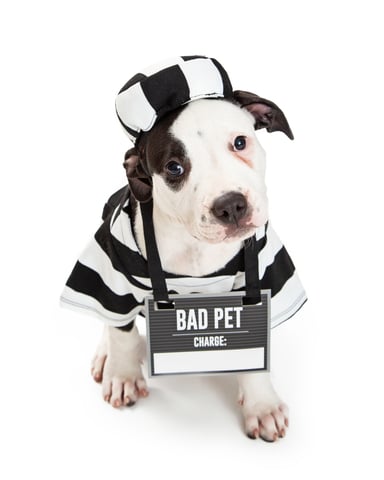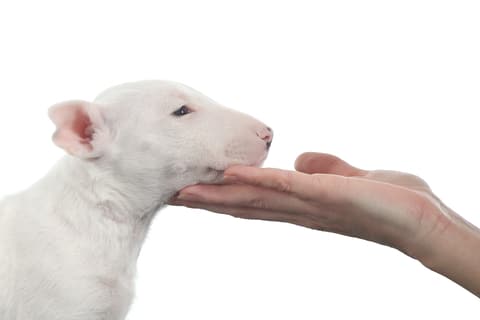Non-toxic ideas to prevent & kill those suckers!

Having recently taken a few ticks off Brio, my basset fauve de Bretagne, and found one walking on my hand after petting Larry, my Chinook, this feels like a good time to write about ticks.
There are some common misunderstandings about ticks. They don’t float in the wind, jump, or fall from trees. They are survivors that winter under leaves and dead grass waiting for a host to walk by. There is no way to protect your dog 100%, but there are a number of things that you can do to try to minimize your dog’s (and your) risk of tick bites.
The first step is prevention. Many dog owners use topical prevention products such as Frontline or Advantage, which are applied directly on your dog, enter the dog’s system, and secrete it through their skin, killing fleas and ticks. The drawbacks to these products are that they don’t prevent ticks from biting. The tick doesn’t die until after it latches onto your dog and ingests the dog’s blood. It is neurotoxins absorbed by the dog and circulating in the dog’s blood that paralyzes and kills the tick. I have to wonder what the impact on the dog’s central nervous system and health must be. Just as importantly, we often see dogs at All Dogs Gym that are on one of the topical products, yet have fleas and/or ticks.
I prefer to use one of the number of treatments that are not toxic to pets. A product that many of our clients have tried and like is called “Pet Tic-off Oil” and is made up of almond oil and other essential oils. I especially like Tic-Off (which we sell at All Dogs Gym) because it is made in New Hampshire by the Slippery Soap Company. One of our employees discovered this company a few years ago at the New Hampshire Made Expo and bought a bottle for us to sample.
Another natural product is “Vet’s Best Flea and Tick Home Spray” which is made up of peppermint oil and clove extract. It, too, has a nice odor. As with any product, if your dog has a reaction to any of these products, wash your dog thoroughly to remove any residue. (Note: Peppermint oil is toxic to cats. If your dog lives with a cat, avoid this product. Always read labels to make sure it is save for your pets).
When you’re applying a spray-on product to your dog, make sure you spray your dog’s legs as well as the body (avoiding the eyes and nose) since ticks are picked up as your dog runs through weeds, grass and leaf litter, and they crawl upward. I’ve used these products on my own dogs. I have found ticks on Larry after a run in the woods, but Larry also bounds through streams, washing off the product I’ve applied.
So what if your prevention tactics haven’t been foolproof (which none is). The University of Rhode Island “Tick Encounter Resource Center” (TERC) (Tickencounter.org) recommends using needle-nose tweezers, grasping the tick close to the dog’s skin, and pulling straight out.
Once you’ve removed it, you need to properly dispose of it. Don’t try to crush the tick which is difficult and can release infection-causing organisms. If any mouth parts of the tick remain in your dog’s skin, do not try to dig them out. Doing so may cause infection, and the dog’s system will expel the remaining tick on its own.
Ticks can survive for three days or more under water, so flushing—while it removes the tick from your house—doesn’t kill it. TERC recommends using clear tape and sealing the tick to a 3 x 5 card with the date you removed it. You can examine the type of tick it is under the tape (the TERC website has pictures to compare with), and dating the card to record the date you removed it in case you or your dog develop symptoms.
Personally, I like to dispose of ticks in a jar with Clorox and water. Clorox not only kills the tick, but it makes me feel as if I’m also destroying the pathogens they carry. It’s probably silly, but it does make me feel better.







